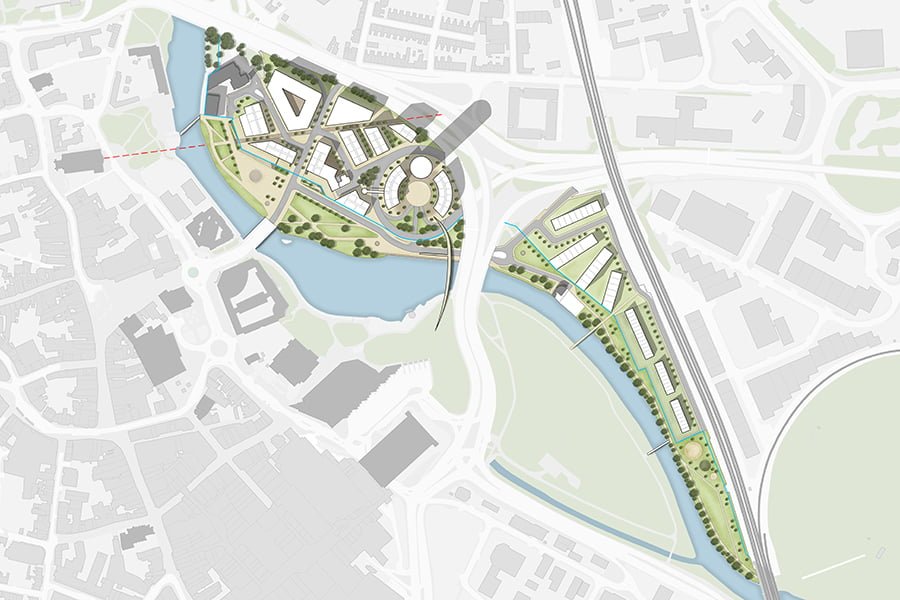
A Brief Rundown on Primary Legislation.
The TEP Planning team has seen a very busy start to 2021, with jobs currently spreading to all parts of the UK. In this first thought piece for 2021, TEP’s Associate Planning & EIA Consultant Juan Murray explains differences between the planning system in England, Wales, Scotland and Northern Ireland.
In England, the primary legislation is the Town and Country Planning Act (TCPA) 1990. This is perhaps the most well-known of all planning legislation and it formed the backbone of planning in the UK before devolution. The next key legislation was the Planning and Compulsory Purchase Act 2004, which introduced Regional Spatial Strategies and Local Development Frameworks, which replaced local plans. Section 38(6) of the Planning and Compulsory Purchase Act 2004 requires that planning permissions are determined in accordance with the development plan. The Regional Strategies were then revoked, under s79(6) of the Local Democracy Economic Development and Construction Act 2009 and no longer formed part of the development plan for the purposes of s38(6). In 2011, the Localism Act introduced the duty to cooperate whereby Local Authorities were required to consider each other’s needs in the context of good spatial planning. It also introduced, as the name implies: Localism – Neighbourhood Planning. In 2012, The National Planning Policy Framework (NPPF) was introduced, which had a strong emphasis on sustainable development and the presumption of sustainable development ensured. The Localism Act and NPPF then consolidated the plan-making process, replacing the term Local Development Framework with the term Local Plan. The planning process was simplified by replacing all Planning Policy Statements (PPS) and introduced the Planning Practice Guidance in an online guidance format.
In Wales, elements of the above legislation still apply, such as the TCPA 1990 and the Planning and Compulsory Purchase Act 2004. The key legislation in Wales is The Planning (Wales) Act 2015 and the Well-being of Future Generations (Wales) Act 2015. The Planning (Wales) Act 2015 aims to ‘make the planning system fit for the 21st Century’. The Well-being of Future Generations (Wales) Act 2015, seeks to improve the ‘economic, social, environmental and cultural well-being of Wales by taking action, in accordance with the sustainable development principle, aimed at achieving the well-being goals’. In Wales, the planning system has two main levels of plans. The Welsh Spatial Plan: Planning Policy Wales (currently at edition 11) acts much like the regional spatial strategies that were in England but covers all of Wales. Then there are the Local Development Plans (LDPs): like England’s Local Plans, each local authority must adopt one. Welsh guidance is further derived from TAN’s – Technical Advice Notes.
Town and Country Planning (Scotland) Act 1997 (as amended by the Planning (Scotland) Act 2019) is the primary legislation in Scotland. Scottish planning is plan-led and local authorities when dealing with applications, should have regard to the provisions of the development plan, so far as material to the application, and to any other material considerations (Section 37(2) TCPA Scotland 1997).
Each local authority in Scotland has a Local Development Plan. There are also four Strategic Development Plans, which set out the future development and land use aspirations across each city region which include: Glasgow and Clyde Valley; Aberdeen City and Shire; Edinburgh and South East Scotland; and Dundee, Perth, Angus and North Fife (TAYPlan).
The primary legislation in Northern Ireland is the Planning Act (Northern Ireland) 2011. It underpins the reformed two-tier planning system, which commenced with the transfer of responsibility for the majority of planning functions from central government to district councils on 1 April 2015. The Planning (Local Development Plan) Regulations (Northern Ireland) 2015 (as amended) set out what is required in the local development plan document and the procedure to be followed, to bring them into effect. The Regional Development Strategy (RDS) 2035, provides an overarching ‘strategic planning framework to facilitate and guide the public and private sectors. It does not redefine other Departments’ strategies but complements them with a spatial perspective’. This document functions in a similar way to Planning Policy Wales. The planning system in Northern Ireland is plan-led with planning decisions based on national and local development plans and policies (like in the rest of the UK).
Hopefully, this summary of the planning system in the UK provides some useful guidance. We have purposefully not delved into Permitted Development Rights, Development Management, Conservation Area, Listed Building or Nationally Significant Infrastructure Project Legislation and Regulation to keep it brief.
TEP is currently working on planning projects across the UK (including England, Scotland, Wales, Northern Island and the Isle of Man). If you would like any further guidance on this topic or to discuss a project, please feel free to contact us by emailing planning@tep.uk.com.
To discover more from the planning team click here.








